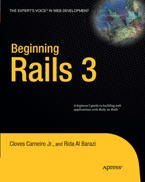Sites I Visit
- freshnews.orgI get my tech news through the freshnews aggregator. While not a complete picture of the world, it is enough for me. Those looking for a more extensive time waster, try originalsignal.com.
Certainly, using an aggregator implies that someone else is selecting the stories I read and therefore outside forces are impacting my worldview. But isn’t that always true? Are we not inherently enthralled by amusing stimulation? Those concerned about it might look here, here or here.
- zenhabits.netLeo Babauta’s Zen Habits is exactly what’s needed when I notice the world seems a shade darker. Have you noticed that some people seem to always be angry? or negative? or depressed? or paranoid? I’m not talking here about something clinical, something requiring psychiatric intervention. No, what I’m talking about here is a person’s persistent mood.
My persistent mood some time ago was rather negative (and my use of the word “rather” is rather charitable.) My discovery–which was actually discovered thousands of years ago and since extensively written about, yet new to me–was that while moods are deeply ingrained, they are not indelibly engrained. You are not stuck with whatever persistent mood you have. In a nutshell, the way to replace (or displace) a persistent mood is through structures and practices that support the new desirable mood and breakup the old undesirable mood.
One of my practices is the practice of awareness. Sometimes I succeed in maintaining awareness and other times I do not. The practice stands nonetheless. The Zen Habits articles are a part of that practice.
- itp.angellearning.comI will finish my master’s in psychology in June 2012. It is an online program (although students spend two weeks in on-campus seminars) hosted by Angel Learning. I frequently login to my account to publish my work and comment on my cohort’s (classmates’) work.
I was skeptical of online education. No longer. I see the benefit of brick-and-mortar schools, especially at the undergraduate level. However, that precludes many adults from continuing or finishing their degrees, either undergraduate or graduate. The online format is a viable alternative.
My interest in online education began long before I returned to school. Moodle captured my imagination and became my entry point into the practical issues of course management systems. For those interested only in (non-degree) continuing education, traditional universities participating in Open Courseware publish actual courses online. Khan Academy is nothing short of inspiring.
Unsurprisingly, not everyone is excited about online education. Why? When in doubt, follow the money.
- safari.oreilly.comI am not an advocate of online subscription services; they too often underdeliver. Yet I am a subscriber to O’Reilly’s online Safari book service for quite a few years now.
I noticed one day that it made little sense to buy technical books–which I did on a monthly basis. I’d once a month wander the aisles of Digital Guru, reading chapter one of a dozen books before buying a must-have. At $40+ a book, I was spending five to six hundred dollars a year. The subscription service is cheaper and I don’t have shelves full of outdated books.
O’Reilly has added a number of non-technical publishers–unexpected but very welcomed, especially Kogan Page, Jossey-Bass, Berrett-Koehler, and Butterworth-Heinemann. I now read several books a month; I’m now in the middle of four: (i) Art of R Programming, the why of which is a long story. R scratches an itch. (ii) Excellence in Coaching, is an edited work on coaching. (iii) The Mindful Coach, outlines Doug Silsbee’s septet model. It’s an interesting approach to developing a wide range of personal communication styles. Finally, (iv) The Handbook of Knowledge-Based Coaching, is another edited work on coaching.
- www.yellowbridge.comI’m still on this masochistic path to learn Mandarin. The Yellow Bridge dictionary is amazing and goes a long way in easing the pain. How good is my Chinese? Well, I haven’t given up. 一步一个脚印。
- [update 2012-02-20] pandodaily.comWhen I first heard that AOL bought TechCrunch, I felt my shoulders slump and the day darken. It was like that when Fox cancelled The Good Guys. And Firefly. TechCrunch wasn’t just news. It was entertainment. And polarizing.
How many productive hours were lost in debate over Michael Arrington’s status as a reporter, the end of journalism, and the recklessness of TechCrunch. It was deliciously awful. The AOL buyout signalled the end. Assurances of editorial independence aside, TechCrunch lost their editorial independence. Who was surprised when Arrington got sacked? No one. AOLCrunch took a wild tiger and put it on a morphine drip. Sad.
A new day. Sarah Lacy has (finally) left to create her own fresh online tabloid, PandoDaily. A few of the old TC bandits have joined the party yet it doesn’t seem to me an attempt to recreate TechCrunch—thankfully. Let the dead lie in peace.
I wish Sarah and her crew well.

